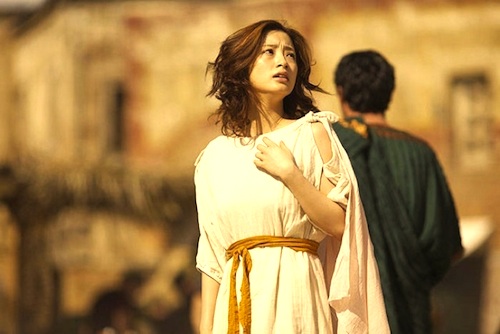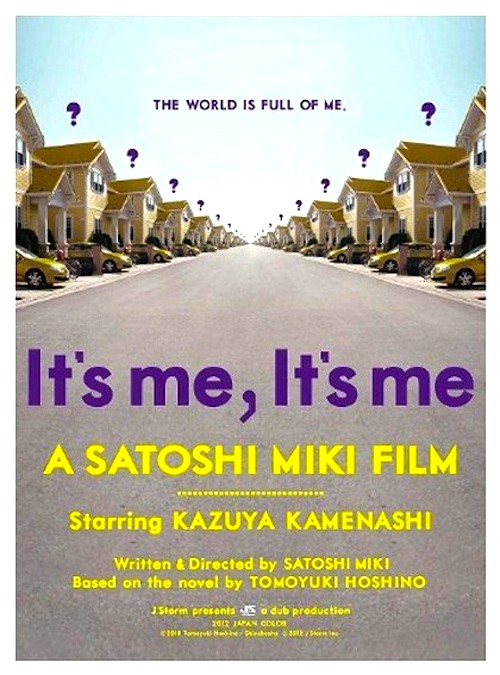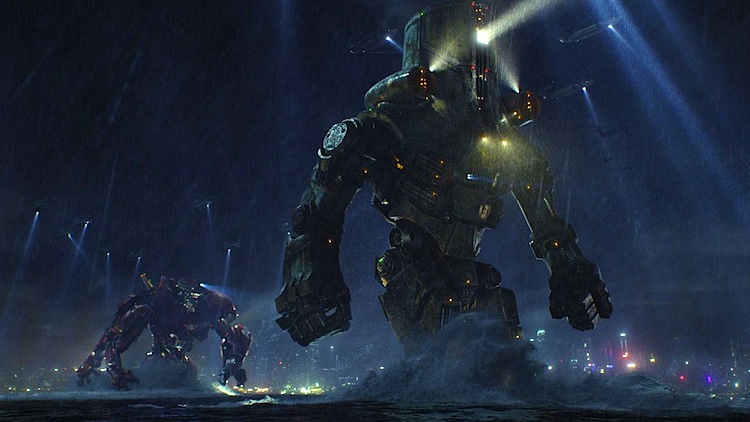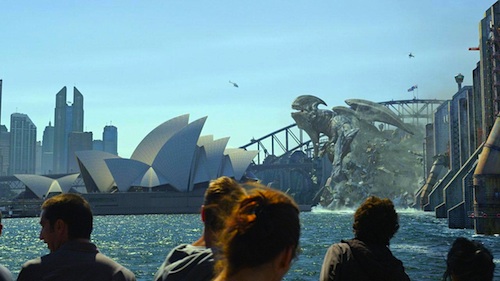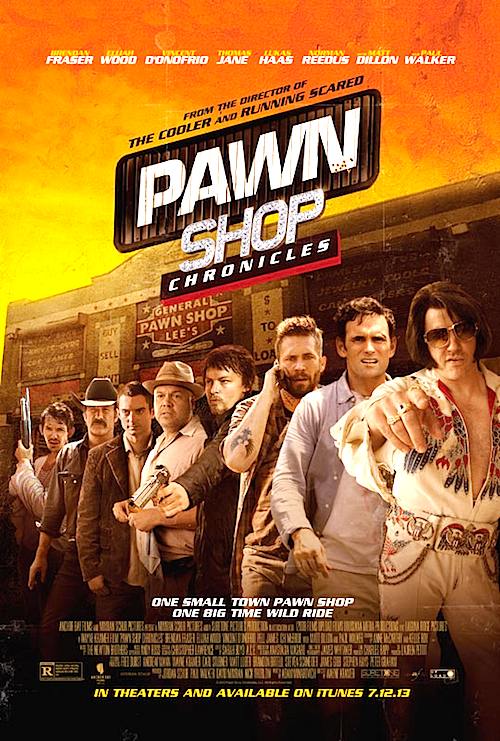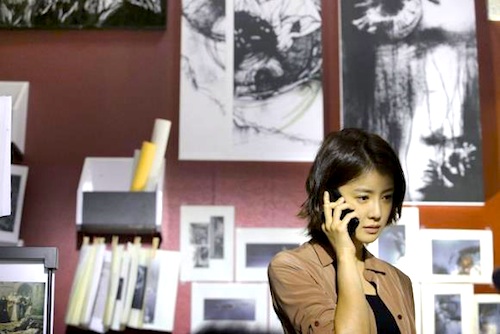By Joe Bendel. That’s right, “Wax” is the word. Named for his hair styler, Wax is a singing kung fu motorcycle gang member, who is out to win the heart of the innocent ingénue. There will be dancing, fighting, and swooning in Jay Chou’s The Rooftop, the closing night film of the 2013 New York Asian Film Festival (and also part of the Well Go USA spotlight), which opens theatrically in New York this Friday.
Wax and his bowling biker buds live in the Rooftop section of Galilee, under the shadow of the huge outdoor billboards. They do not mind the scenery, though. In fact, they are rather fond of the one featuring Starling, a budding starlet and supermodel. Wax’s three stooges, Tempura, Egg, and Broccoli refer to her as “Sister-in-Law” to needle the big smitten lug. Everyone assumes nothing will ever come of his impossible crush until the day Wax picks up some part-time stuntman work getting the snot beat out of him on the set of her next picture.
Of course, she notices him. As their chaste courtship heats up, William (the one-named), Starling’s mobbed-up movie star patron, contrives to sabotage their romance. We know he is bad news because he is an associate of Red, one of Tempura’s unfriendly rent-collecting rivals working for the corrupt housing authority. That’s right, some of the villains are Taiwanese HUD bureaucrats, albeit decidedly more flamboyant than our homegrown variety.

For his second outing in the director’s chair, pop idol and action super-star Chou channels his inner Baz Lurhmann, unleashing a kaleidoscope of colors and staging big, flashy, razzle-dazzling musical numbers. Clearly not afraid of a little sentiment, Chou indulges one big melodramatic set piece after another. One minute Wax and Starling are strolling through a carnival, next they are dancing in the rain, and shortly thereafter they stare into each other eyes in his quaint rooftop neighborhood as fireworks explode in the background. It’s all good.
Chou and the radiant Li Xinai look like an attractive couple and develop some half decent romantic chemistry together. She even does some legit acting in her own scenes. However, the crafty old HK vet Eric Tsang often steals the show as Dr. Bo, the lads’ martial arts mentor and local snake oil salesman. Alan Ko also has his moments as Tempura, the enforcer trying to go straight. Unfortunately, the shticky comic relief delivered by Egg and Broccoli becomes embarrassing over time.
Still, Rooftop has a few gags that will have viewers laughing in spite of themselves. Truly, this is kitchen sink filmmaking. Chou throws it all in, including a way over the top framing device. Yet, Mark Lee Ping Bin, considered one of the world’s finest cinematographers for his work on films like Norwegian Wood, makes it all look bright and sparkly. If you want spectacle, Chou has your spectacle right here. Recommended for those who thought The Great Gatsby was too staid and did not have enough martial arts, The Rooftop officially closed this year’s NYAFF last night, but will open this Friday (7/19) in New York at the AMC Empire.
LFM GRADE: B-
Posted on July 16th, 2013 at 10:57pm.
